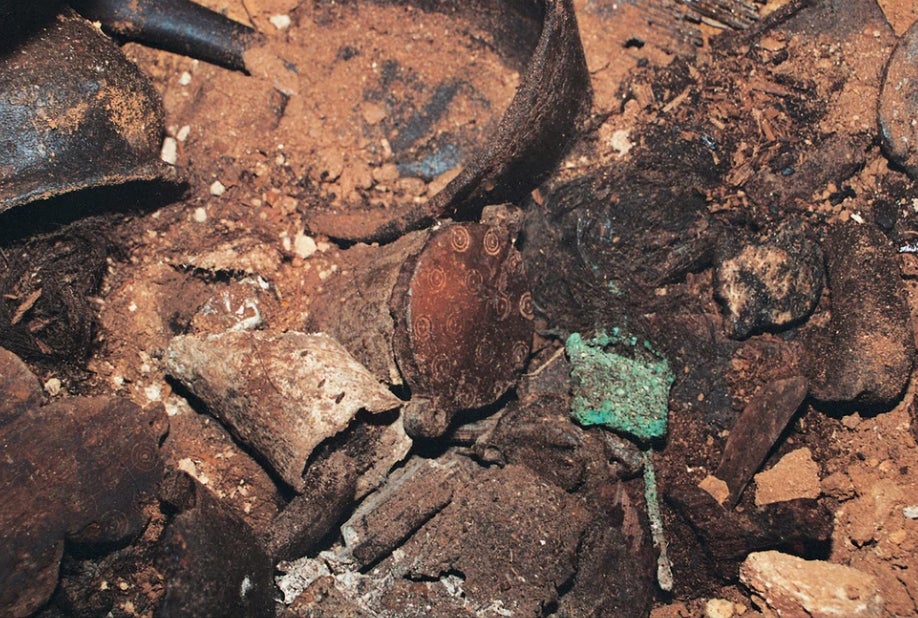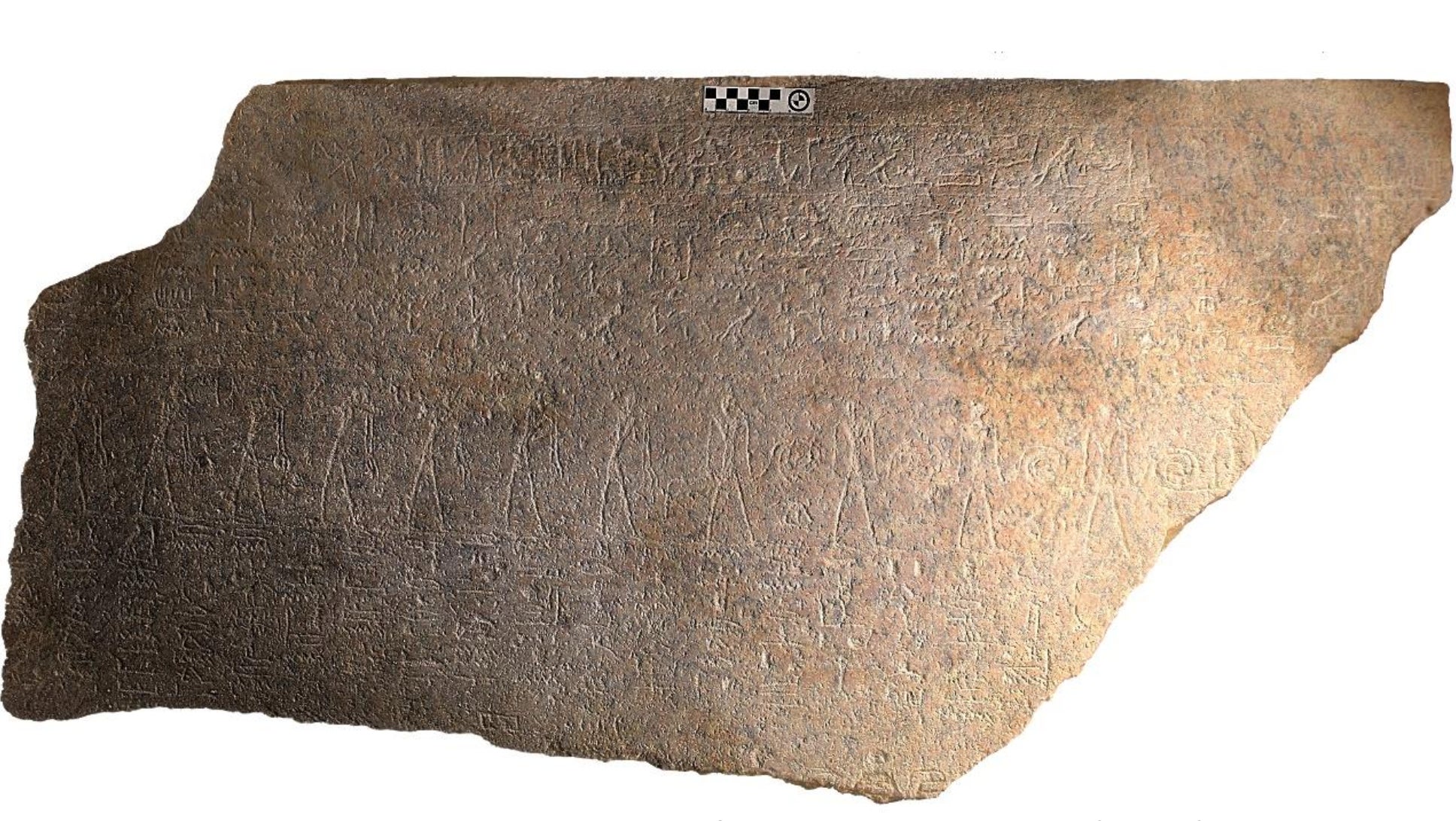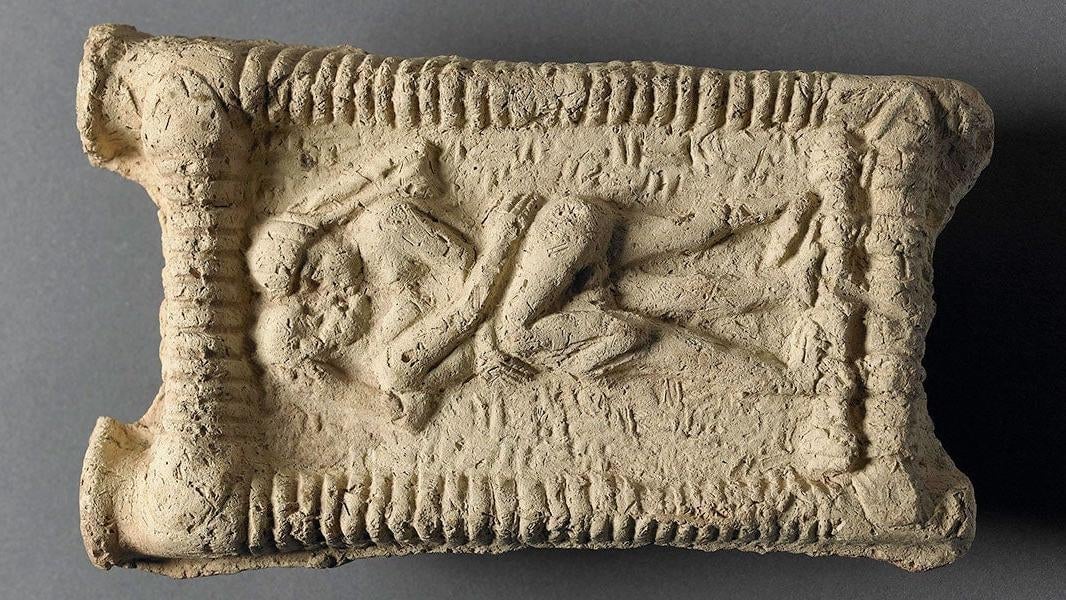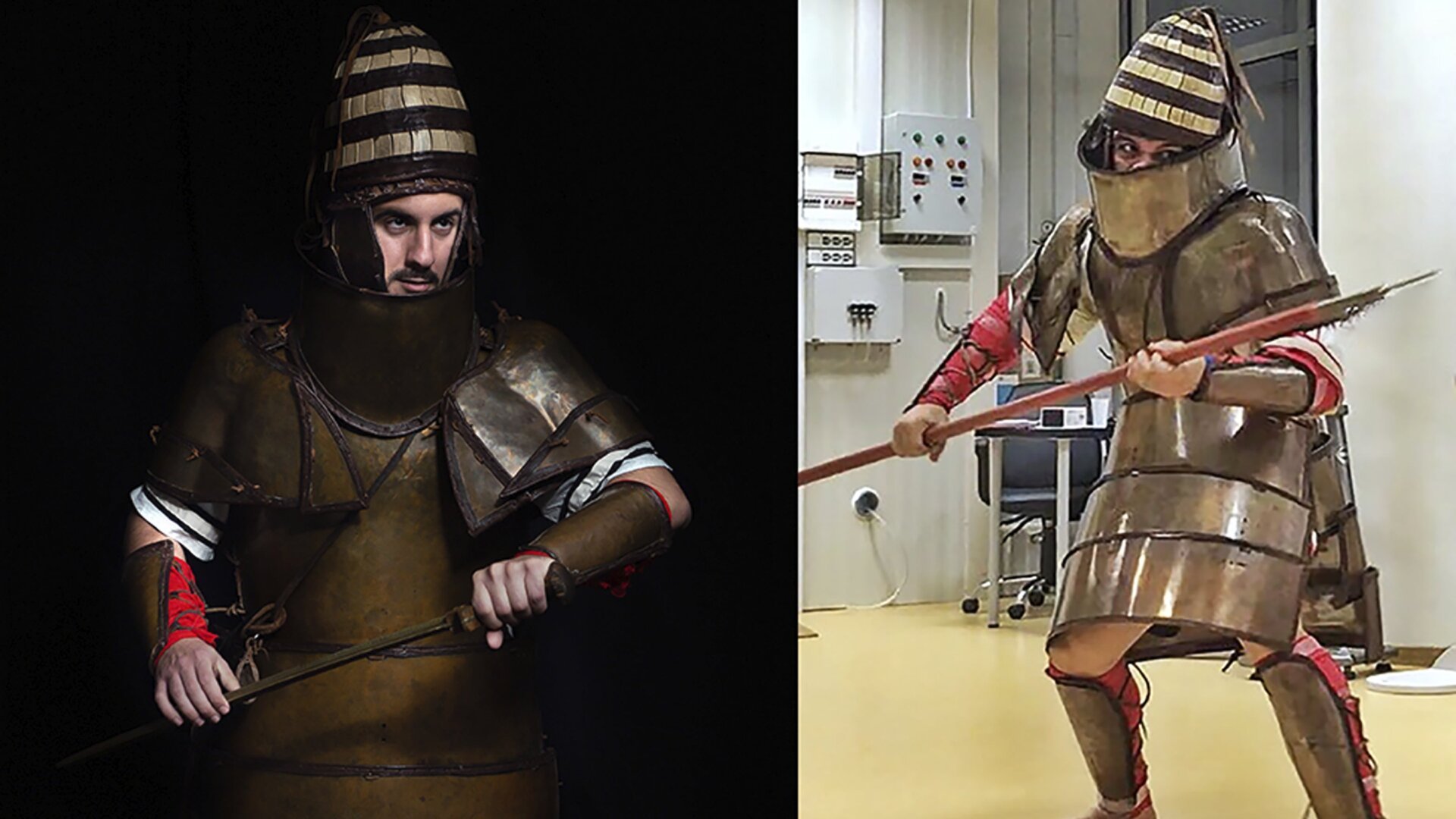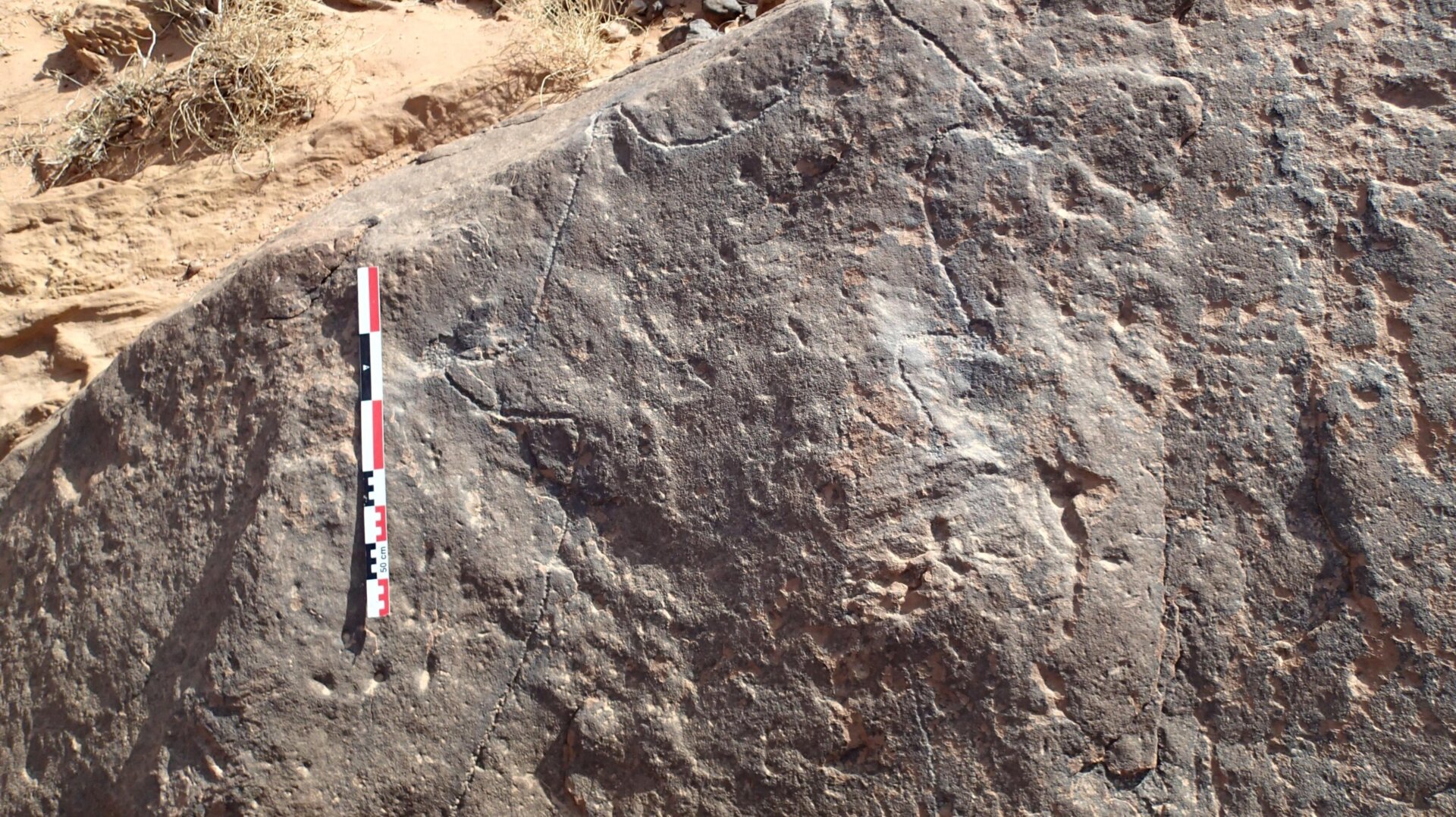Archaeologists have uncovered evidence of psychoactive drug use in Bronze Age Menorca, one of the Balearic Islands off the coast of Spain. Analysis of ancient hair recovered from the Es Càrritx cave revealed the presence of opium alkaloids, compounds known for their hallucinogenic properties. This discovery sheds light on the ritualistic practices of the ancient inhabitants of this Mediterranean island.
The Es Càrritx cave, used as a funeral chamber between 3,600 and 2,800 years ago, held more than just the remains of the deceased. Within a sealed chamber, researchers found ten intricately decorated wooden and horn containers holding strands of human hair. Some of these hairs were dyed red, suggesting a special significance. Out of the 210 individuals whose remains were discovered within the cave, it appears only a select few were chosen for this unique treatment.
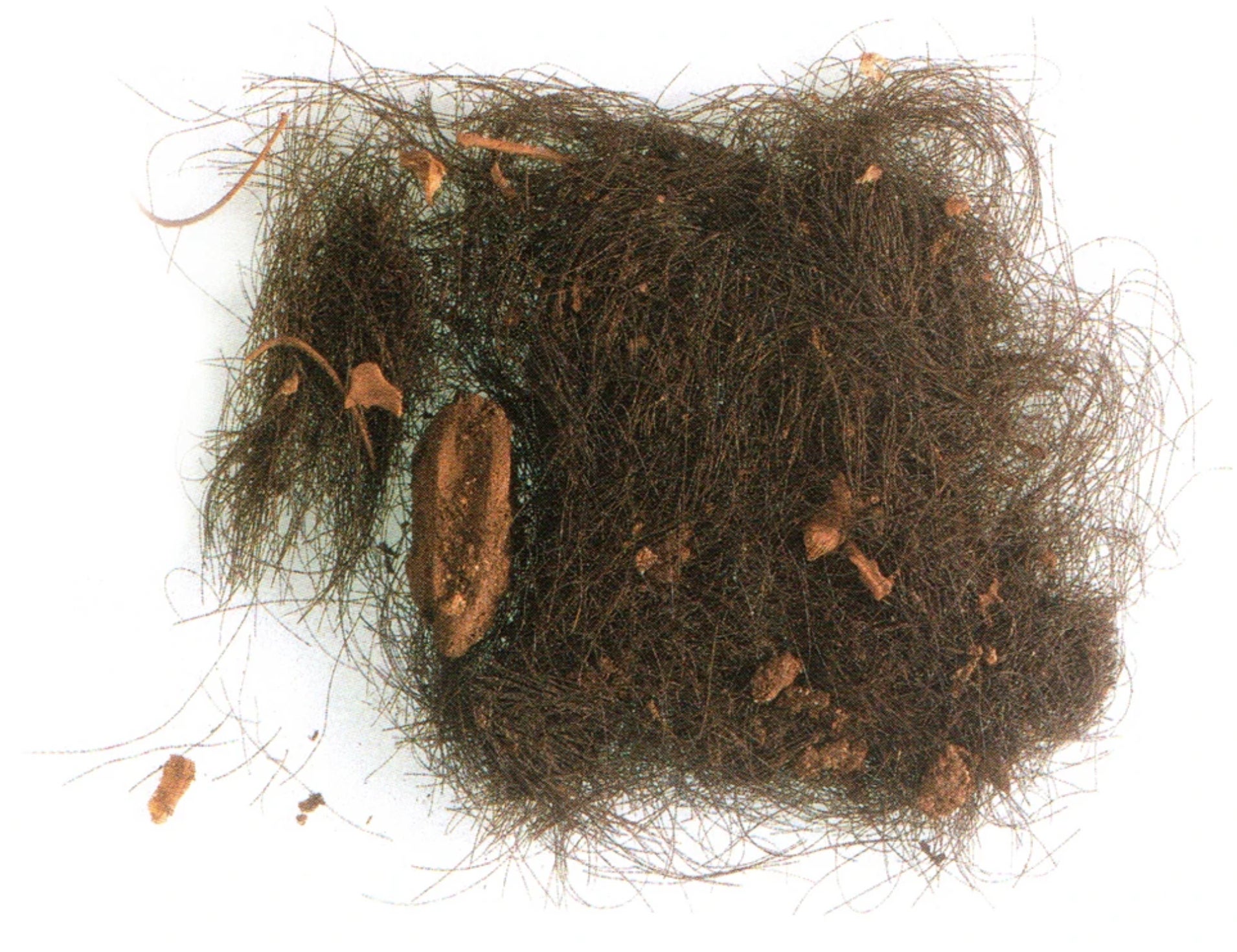 The ancient hair, flecked with bones.Red-dyed ancient hair found within decorated containers. Photo: P. Witte
The ancient hair, flecked with bones.Red-dyed ancient hair found within decorated containers. Photo: P. Witte
Using advanced techniques like liquid chromatography and high-resolution mass spectroscopy, scientists identified the presence of atropine, scopolamine, and ephedrine in the hair samples. Atropine and scopolamine are found in plants of the nightshade family, known for their psychoactive and potentially toxic effects. Ephedrine, on the other hand, is derived from certain shrubs and pines.
The specific plants used remain a mystery. While no archaeobotanical evidence of these plants was found near the cave, suggesting they weren’t part of the burial rituals themselves, the researchers hypothesize that the alkaloids were likely administered by shamans. These individuals would have possessed the specialized knowledge required to safely handle and administer these powerful substances.
The presence of these alkaloids in the hair suggests prolonged use. Based on the analysis of hair segments and average hair growth rates, scientists believe the individual ingested these psychoactive plants for close to a year before their death. This implies a sustained engagement with these substances, potentially for ritualistic or ceremonial purposes.
This discovery from Menorca joins a growing body of evidence documenting ancient drug use. Archaeological findings have revealed evidence of drug use across different cultures and time periods, from a 1,000-year-old drug stash in Bolivia to traces of cannabis in an ancient Jewish shrine. The Wari empire, which flourished in the Peruvian Andes from 600 to 1000 CE, also provides evidence of hallucinogen use during elite feasts.
While the Menorca discovery reveals a remarkably early instance of drug use, it’s likely just one piece of a much larger puzzle. The use of psychoactive substances probably extends far deeper into human history, perhaps even millions of years. Further research continues to unveil the complex relationship between humans and altered states of consciousness throughout history.
This Bronze Age discovery in Menorca offers valuable insights into the ritualistic practices and potential shamanistic roles within ancient societies. The use of these psychoactive substances suggests a sophisticated understanding of the natural world and a desire to explore altered states of consciousness, pushing back the timeline of documented drug use in human history.



